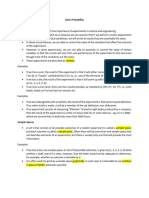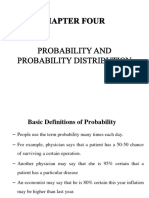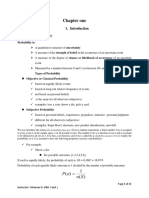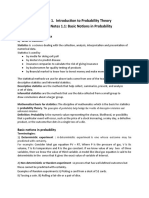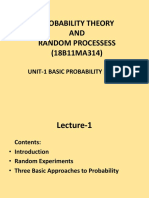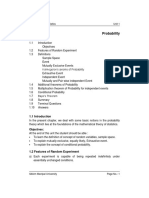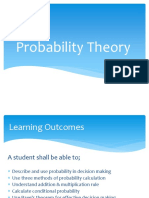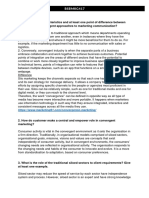0% found this document useful (0 votes)
30 views15 pagesUnit 1 Probability
The document provides an overview of set theory, including definitions of sets, subsets, operations such as union, intersection, and complement, as well as set identities and cardinality. It also covers probability theory, distinguishing between deterministic and random experiments, defining sample spaces and events, and explaining different types of events and probability approaches. Key concepts include classical, statistical, and axiomatic definitions of probability, along with methods of enumeration such as permutations and combinations.
Uploaded by
boranana777Copyright
© © All Rights Reserved
We take content rights seriously. If you suspect this is your content, claim it here.
Available Formats
Download as PDF, TXT or read online on Scribd
0% found this document useful (0 votes)
30 views15 pagesUnit 1 Probability
The document provides an overview of set theory, including definitions of sets, subsets, operations such as union, intersection, and complement, as well as set identities and cardinality. It also covers probability theory, distinguishing between deterministic and random experiments, defining sample spaces and events, and explaining different types of events and probability approaches. Key concepts include classical, statistical, and axiomatic definitions of probability, along with methods of enumeration such as permutations and combinations.
Uploaded by
boranana777Copyright
© © All Rights Reserved
We take content rights seriously. If you suspect this is your content, claim it here.
Available Formats
Download as PDF, TXT or read online on Scribd
/ 15






